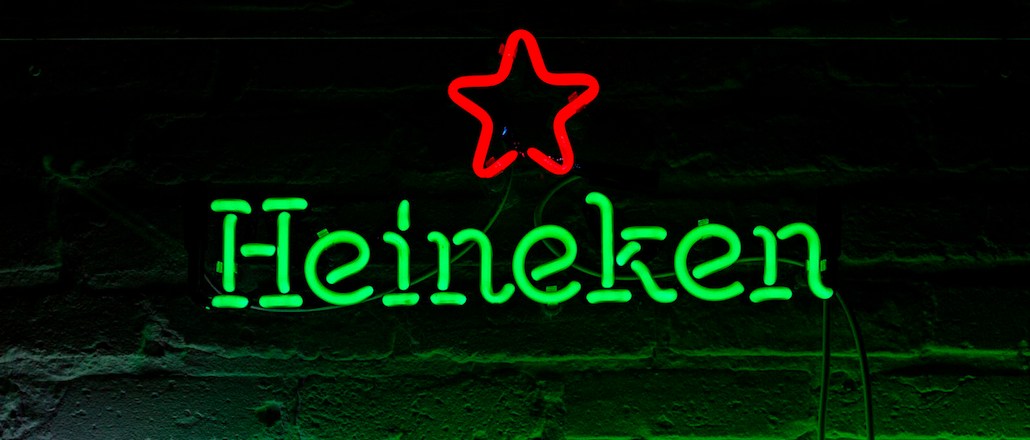Save 50% on a 3-month Digiday+ membership. Ends Dec 5.
Heineken CMO: ‘We spend all our energy trying to understand millennials’

This is ThinkTank, a Digiday series where we quiz brand chiefs on where the industry is heading.
Nuno Teles was appointed CMO of Heineken USA in hopes that he’d bring some of the magic he made as CMO of the brand’s Brazil operations to the U.S. Having overseen a 500 percent growth rate over his four-year tenure as Brazil CMO, Teles has spent the last two years in the U.S. grappling with a new set of challenges.
Chief among them: how to bring the brand, traditionally reliant on television, out-of-home and radio advertiser, into the digital age. Teles said that digital is his key focus, and he has spent the last two years basing marketing decisions on “data-driven approaches.
More of what he said, lightly edited:
Millennials aren’t drinking beer.
Big beer is being pummeled at both ends when it comes to younger drinkers. Wine consumption is up, and the young consumer who does want to drink beer is gravitating toward craft beers. For Heineken, this is a major challenge. “We spend all our energy now trying to understand the millennial consumer and how to better reach out to a millennial drinker,” said Teles. One way it is doing that is by focusing on speed. “We don’t live in an era of loyalty,” he said. Heineken research has shown that people will only buy, these days, one brand of beer twice every year. “The challenge for us is whether we drive frequency or we drive penetration.”

The answer is penetration — and programmatic.
When Heineken tested Desperados, its tequila-flavored beer, in Georgia, it used both television and digital media to reach people. Using Facebook, it served ads based on time of day and location. “When we used TV, we reached zero-percent awareness,” said Teles. “With digital we reached 23 percent. The big shift for us is to figure out how to reach out to them.”
Ad position: web_incontent_pos1
That insight led to an allocation of 25 percent of its total budget to digital, with about 10 percent of that on programmatic. The problem, of course, is data: Because of U.S. laws about how alcohol producers sell to customers, the brand has little first-party data.
Another example is the brand’s Heineken Light campaign, a video ad campaign featuring Neil Patrick Harris that Teles said reached 35 million people (mostly in the target age group) in three days using ads and video both on desktop and mobile — nowhere near TV networks. “That’s how we drive penetration. We need relevant messaging.”
The brand is very focused on sales.
Teles said he has pushed to partner closely with Datalogix to really measure sales impact of initiatives. “Programmatic makes total sense for us, but we want to know how we can link that to sales impact,” said Teles. So for the UEFA Champions League, the brand is testing two different spots — one with Latino actors and one with general market. The sales lifts have also been totally different. “The bicultural consumer is more interested in being connected to and understanding bicultural actors than general market.”
Today, Teles said the brand uses ad trackers test with different segments — the brand calls them “personas” — to see when people stop watching ads or when they click off, etc. “It’s more and more what we need to do.”
The need for speed has changed how Heineken operates internally.
The brand has built an in-house design team as well as an in-house production studio so it can create more content. It’s a necessary part of having a strategy also rooted in programmatic advertising — Teles said he needs more content so he can segment his audiences better. “We need to be flexible; we need partners to be flexible.”
Ad position: web_incontent_pos2
His biggest challenge is maintaining innovation.
Heineken has long kept tabs on what it calls its “innovation rate,” the percentage of sales that come from new products. Today, the innovation rate is at 9 percent. “The hard part is the sustainability of the innovation,” said Teles. “It’s easier to reach out to a market with a new proposition or product and sell a couple million dollars worth in the first year,” he said. “The challenge is the second or third year.” Recent innovations include Radler, a beer and lemonade mix and the “pop-up city lounge” testing in multiple cities that the brand thinks will be the next concepts in bar design. “We can’t be locked in a corporate universe,” said Teles.
More in Marketing

Ulta, Best Buy and Adidas dominate AI holiday shopping mentions
The brands that are seeing the biggest boost from this shift in consumer behavior are some of the biggest retailers.

U.K. retailer Boots leads brand efforts to invest in ad creative’s data layer
For media dollars to make an impact, brands need ad creative that actually hits. More CMOs are investing in pre- and post-flight measurement.

‘AI is permeating everything we do’: How Guitar Center developed 2 AI tools this year
This summer, the company launched a chatbot called Rig Advisor to help customers find the right instruments and products.
Ad position: web_bfu





